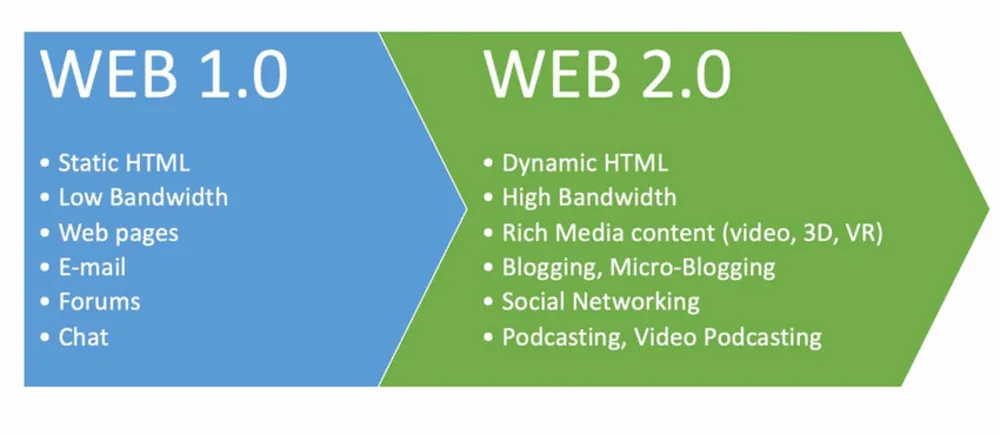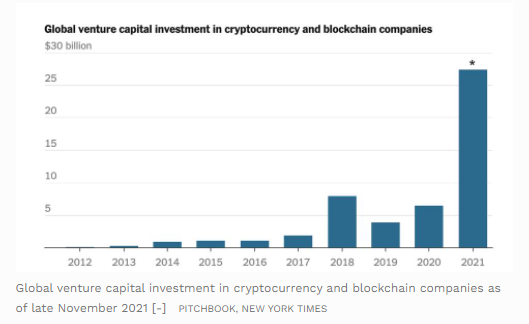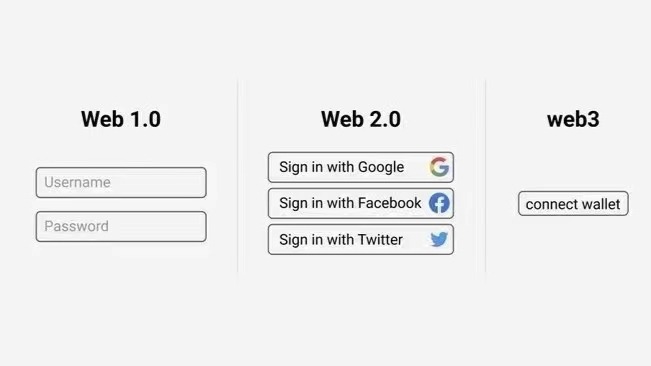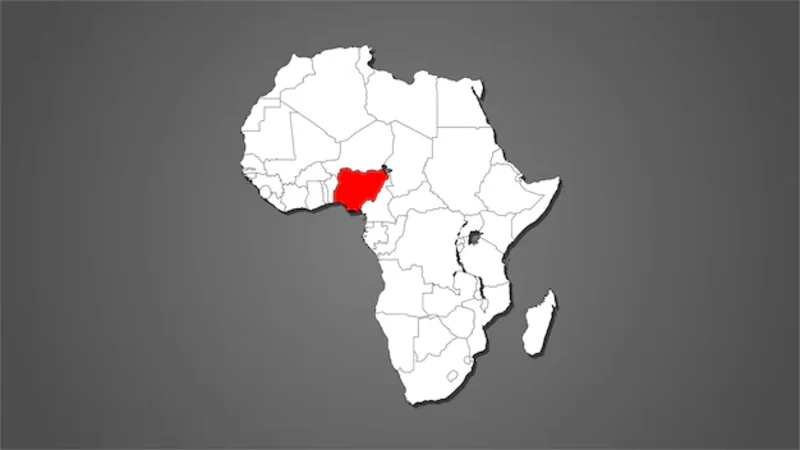
The future is ‘decentralised’
Since its official inception on January 1, 1983, the Internet has remained an indispensable part of human life. Since then, the internet has evolved into new forms that improve global information and technology. Despite the fact that the internet has evolved into numerous forms, one of its most popular technologies is "The Web."
The World Wide Web operates as an application layer protocol on the internet. It consists of an infinite number of people from around the world who use the internet daily. Information on the web remains one of humanity's greatest assets, and the web has been the source of numerous ideas and innovations that have shaped the internet era.
The Web Before and Now
The web, in its first generation, was mainly a hub of information and documents. It was just a place to store information written in HyperText Markup Language (HTML), and the websites that were on it at the time didn't let users do much, if anything. This was called Web 1.0
Following the emergence of more advanced programming languages, including advancements in HTML, and with the evolution of the computer and computing systems, the internet evolved to enable the creation of web platforms that are more user-interactive. Before, information was scattered around text on the web. Users can interact with a website in a lot of different ways now. This evolution is what we regard as the birth of Web 2.0.
READ ALSO - Jambo Secured $7.5M to Build ‘Web3 Super App’ of Africa
Darcy Dinucci came up with the term "web 2.0" in 1991 to describe the second generation of the web's development. "Web 2.0" is a collaborative and participatory web platform that lets users do social things on the web, like making their own content and interacting with content made by other users. Simply put, Web 1.0 evolved from having no interaction between the web and users to Web 2.0, where interaction is at its core.

Although the web is set to pivot to Web 3.0, several web 2.0 applications have influenced a majority of human activities and everyday life—from blogging and microblogging platforms to video service hosting and sharing platforms where users can interact with content and generate and share their own content. On the Web, people have also built Web 2.0 resources and commercial applications. Information from a Web 2.0 platform can be sent to and used by other platforms using algorithms like web APIs and RSS (RDF Site Summary).
People who own web 2.0 platforms have complete control over them. This is because Web 2.0 is hosted on a server where one person or group is in charge of everything that happens on the platform. This control, on the other hand, is unlimited and affects almost every part of the platform, including the creation of content and the sharing of information on the platform, as well as the creation of personal profiles and the information in those profiles.
As a result, the platform owners can easily control activities on the platform to ensure that they adhere to the terms and conditions specified on their platforms. The fact that Web 2.0 platform owners can remove user-made content makes users "mere participants" who have little to no control over how they are treated on the platform.
READ ALSO - A Summary of Africa's Fundraising in September 2022
Web 3.0 is about to change all that
Because of how little control there is on Web 2.0, the dark side has become quite worrisome. In many instances, owners of web 2.0 platforms have misused their access to activities on their platforms, including distributing confidential information about users on their platforms. Information about topics of interest has also been censored or put down by the controllers of these platforms in cases where such information is against their interests or gives out vital information on some issues that expose certain parties related to the platform.
Web 3.0 platforms will offer a decentralised web platform that will disrupt governance systems where each member has real control over their activities. This is different from Web 2.0 platforms, which are centralised.
Web 3.0 technologies will redefine the backend of the web. It will give each user the same rights, but the web front end will look and work mostly the same: interactive and flexible. The backend of Web 3.0 is structured to grant equal rights to users.

The Web 3.0 revolution will be championed by Blockchain Technology. To this effect, more venture capital firms are aiding in facilitating this process by investing massively in blockchain and Web 3.0 platforms. Research by Global Newswire reveals that the Web 3.0 Blockchain market was estimated to be worth roughly $2.9 billion in 2021 and is expected to reach $23.3 billion by 2028. The report also revealed that, on the basis of region, Asia-Pacific is projected to dominate the world-wide Web 3.0 Blockchain market.
One block could store just about any type of information. In cryptocurrency transactions, which is a popular context of blockchain applications, a block holds records of all recent transactions.
New blocks of chain must be created for each new piece of information that needs to be stored. Every new block is referenced by information that can not be added to the previous block, and its information cannot be edited.
READ ALSO - Featured: Nigerian Tech Startups are Africa’s Most Accelerated
Each block has a record of data linked to the same hash, which is a cryptographic code that can be used to identify the block. Each user of the blockchain runs one of the servers (called "nodes"), and each user who runs a node checks each block before it is made. This makes the blockchain more secure and stable.
Web platforms on Web 2.0 built on the blockchain copy this concept too. Users who create accounts on the platform own an account that will run on the blockchain. The activities of each user are verified by other users on the platform and are stored on the block. Since the block can't be changed, all of these activities, including user-generated content and user profiles, are permanently stored on the blockchain and can't be changed or taken off. This solves the problem created by the centralisation of the web in Web 2.0.
While Web 2.0 platforms continue to become more centralised and censored by the people in charge of them, content creators who have no control over their content continue to complain. However, emerging web 3.0 platforms have promised users immutability and decentralisation. Content creators on Web 3.0 platforms can now trust that their content will be safe and in their own control.
This will, however, raise questions about how harmful and unhealthy content on Web 3.0 platforms will be regulated.

Web 3.0 technologies create a wider range of entry points to the platforms on which they run. Because of this, these entry points are controlled by many different units, which on Web 3.0 platforms are the users. Specialised algorithms and technologies, such as Artificial Intelligence (AI) protocols, are used in this new version of the internet to make sure that the different Web 3.0 systems work the way the users want them to. For example, a "plug and play" system that connects you to your platform through your wallet is all you need to experience a world of endless possibilities on Web 3.0, and it also works to protect user identity and data.
Barriers to Web 3.0 Adoption
One major barrier to Web 3.0 adoption is its complexity. Many of the already existing Web 3.0 platforms are not so easily understandable. Many people still can't grasp the technology of blockchain, and this in itself is one major challenge that affects most Web 3.0 platforms and prevents them from scaling.
Due to the inability of these platforms to scale, most blockchain-powered platforms grow to become heavy as a few more users adopt their technology. This, often inadvertently, decreases the efficiency of the Web 3.0 platform.
Other problems faced by Web 3.0 include:
- Security: According to experts, decentralised blockchains are said to be more susceptible to 51% of attacks than centralised ones. This has remained a problem for a few crypto enthusiasts who would rather keep their assets on decentralised chains.
- Regulation: We have pointed out that Web 3.0 poses a curious issue in terms of regulation. And while in its nature, it appears to defy regulation, it may not stay like that for long as regulators and government outfits will have a role to play in this new version of the internet.
- Inconsistency: Inconsistent data may lead to logical contradiction and incorrect analysis. Although the Web 3.0 is backed by AI that aids in data filtering, when data provided is intentionally wrong and misleading, this may become quite a messy problem in Web 3.0 platforms. Luckily, there are cryptography techniques currently utilised to stop this problem.
- Marketing: Just like how cryptocurrency's inherent volatility give its platforms a little untrusted reputation in the eyes of potential customers, the same issue may present itself for potential Web 3.0 platforms.
- Low workforce availability: Currently, there is a shortage in the blockchain workforce, and this may be due to blockchain firms being unable to meet their hiring needs. The colossal impact of this is the slower development of blockchain projects because of the high number of people locked into job contracts.
- Evolution: Blockchain will continue to evolve, and at an incredible pace. As more stakeholders get involved in the space, new and even more disruptive advancements will change the way crypto companies operate — and how their partners and customers engage with them.
Web 3.0 is, nevertheless, here to stay as the future is undoubtedly decentralised. And while there may be over 106 million people using cryptocurrencies around the world, there is still a huge population of people who don’t understand the concept of blockchain technology. They are either lacking adequate information, overwhelmed by the tech-driven crypto-environment, or in need of the right direction.
As this technology becomes even more developed over the next few years, we will still need some practical use-cases of Web 3.0 to truly understand the positive changes it can bring to our day-to-day activities.
Tags
Block Chain
Web 3.0
Cyptocurrency
Categories
News
Featured
Similar News
May 20, 2024

Egyptian and Tunisian Startups Chosen for Climate-Focused Mega Green Accelerator
May 26, 2024

Google to Construct First Subsea Fiber-Optic Cable Linking Africa and Australia
May 21, 2024

Nigerian Startups Secure 30% of $15 Billion Funding by African Startups Over Five Years
Are you a start-up or an entrepreneur in Africa?
Subscribe to our mailing list
